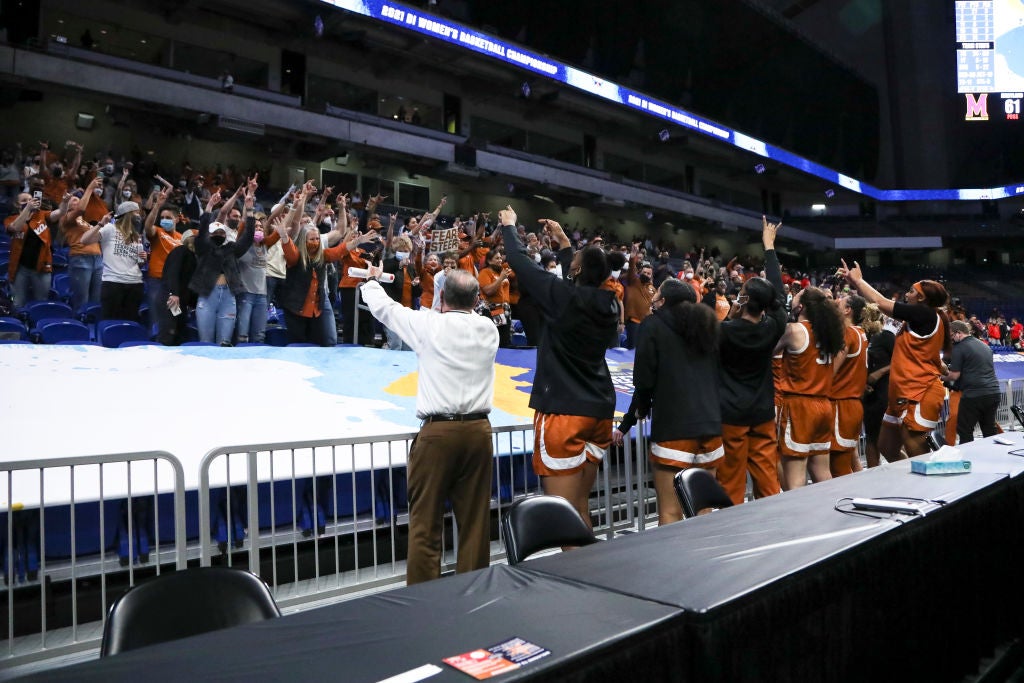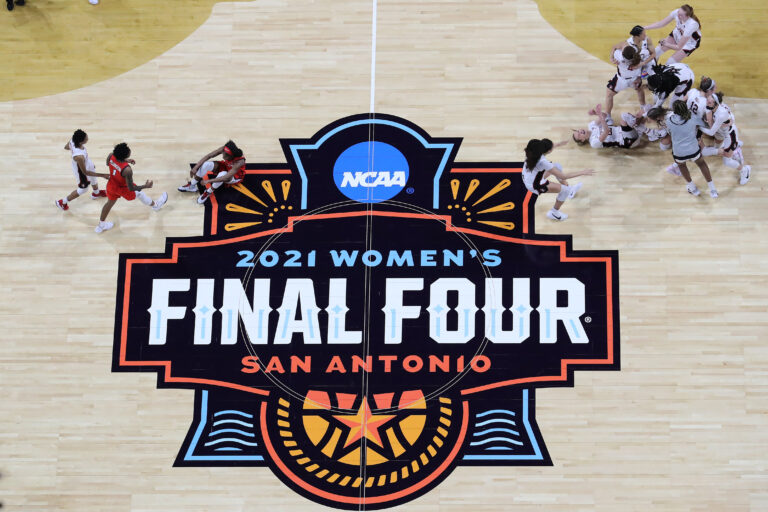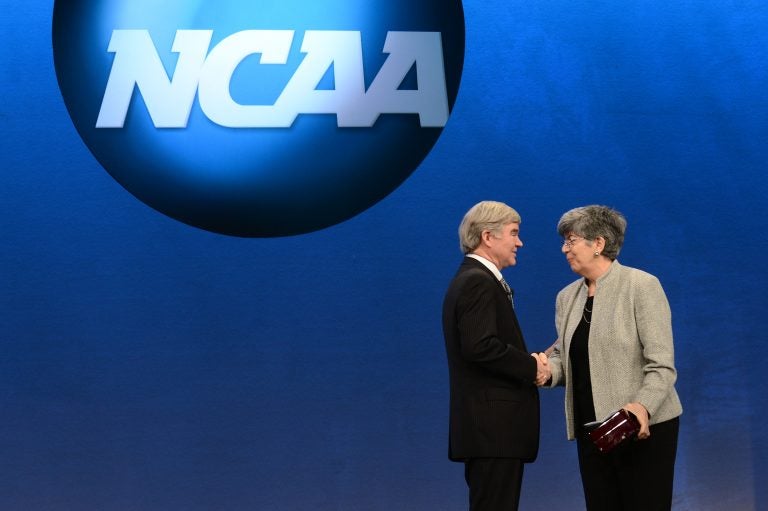Rodney Page's Career at the University of Texas Foreshadowed the Inequities Women's Basketball Would Face
Why this matters
At the University of Texas in the 1970s, Rodney Page became one of the first successful head coaches of the women’s basketball program. By getting a foot in the door, Page could have driven progress in the school’s athletic department and likely others around the country. Instead, he was fired and faded into anonymity, and today Texas has zero Black head coaches.
When Rodney Page arrived at the University of Texas at Austin in 1972 to teach physical instruction, he immediately stood out as a Black man at an institution that had only recently allowed Black teachers. And when Page was hired to coach the school’s women’s basketball team a year later, he became an even bigger anomaly: the school’s first-ever Black head coach, leading a team of all White players, navigating ongoing campus desegregation at the dawn of the Title IX era.
Page’s story has come to illustrate the progress college sports have made in terms of achieving racial and gender equity – and also why some deep-rooted biases and barriers to opportunity continue to persist, both for coaches of Color and for women’s sports in general.
I first learned about Page while researching a piece on the history of race and football at Texas in the wake of the school hiring its first Black head football coach, Charlie Strong, in 2014. I am now working on a dissertation in the school’s Physical Culture and Sports Studies program about Page’s coaching tenure, which despite lasting just three years was remarkable for many reasons.
First among them? Page being on campus at all. Texas was, and is, an enormous institution. In the mid-1960s, it boasted over 27,000 students and more than 1,800 faculty members. Yet in 1972, Page believes, the school had somewhere around five to nine Black faculty members total – and Page was the only Black instructor in his department.
At the time, Texas was 16 years into allowing Black undergraduates to attend and just three years removed from the appointment of the school’s first Black professor. While the Longhorns football team had been desegregated in 1970 – Texas holds the distinct ignominy of fielding the last all-White national championship team in the 1969 season – there were very few Black athletes on campus.
In a recent biography of the Heisman-winning Longhorns running back Earl Campbell, Asher Price chronicled efforts to keep Black athletes off the football team, which he wrote was rooted in “an explicit anxiety about physical contact between whites and African Americans, especially between black men and white women.” By taking the women’s basketball coaching job, Page stepped directly into what remained of this dynamic.
Page wasn’t naive. He grew up in the segregated South, attending the famed Jack Yates High School in Houston. He says that Texas was known as the “orange and white plantation” and that some people close to him questioned why he would work at the school.
But others told Page he had a calling to teach at the university – and he felt the same way. Page says that he didn’t experience “a whole lot of overt racism against me” at Texas and that “there were a lot of good people” at the school. He especially credits Betty Thompson, a pioneering professor and sports administrator who was instrumental in the creation of Texas’ department for women’s intercollegiate athletics in 1974.
Thompson was the first person Page met when he visited the campus to interview for a teaching position in the summer of 1972. He immediately found her trustworthy, and when the women’s basketball coaching job became available, it was Thompson who both encouraged him to apply and hired him for the role. “In her eyes,” Page says, he “always saw acceptance and belief.”
Still, Page ran into what he describes as “invisible walls” and “invisible ceilings” once he started coaching. In November 1973, Herb Holland wrote a column in the student paper, The Daily Texan, that began by observing: “How can you play ball with two strikes already against you? Consider the case of Rodney Page. ... He is black. And he’s a man coaching the Texas women’s basketball team.”
Many of the obstacles facing Page – and his players – were quite visible and endemic to women’s college sports in that era. Title IX, the 1972 federal civil rights law that prohibits sex-based discrimination in schools or education programs receiving federal funding, had been enacted just months before Page arrived on campus. At Texas and across the country, women’s sports were marginalized or dismissed outright and subject to widespread sexism.
Page wasn’t paid during his first year of coaching. His team wore repurposed volleyball uniforms and travelled to road games in cars and vans. “When he’s not coaching the women’s team,” Holland wrote, “Page actively works to try to help get the women’s team the necessary supplies and equipment they don’t get through the poorly treated women’s athletic program here.”
As Page and his players worked to rise from club to varsity status, they became trailblazers: the first Texas women’s team to use the school’s Gregory Gym; the first to have the school’s marching band and cheerleaders perform at one of their contests; the first to have school athletic trainers fully committed to them.
Page led Texas to winning records in his second and third seasons. He recruited the school’s first Black female scholarship athlete, Retha Swindell. In 1976, however, director of women’s athletics Donna Lopiano replaced Page with Jody Conradt, who was coming off a winning season coaching at the University of Texas at Arlington.
Hired in 1975, Lopiano would become a seminal figure in college sports history, a firebrand who helped build the Longhorns into a women’s sports powerhouse and fought for gender equity on campus and nationwide. In a 2011 oral history, Lopiano explained what it was like at Texas when she started her job by telling the story of one of the biggest donors to the women’s program at the time. The donor gave money at his wife’s behest; he also dropped the n-word in casual conversation.
“That was the juxtaposition of Texas,” Lopiano said. “To be anything you wanted to be because of the wealth of Texas, and to be in the Deep South and to still have the vestiges of racism right there in front of you.”
When Lopiano took over for Thompson, every Texas women’s coach was also a physical education teacher who was paid a small amount to coach on the side. Lopiano had a mandate to make the school a national powerhouse; to do that, she believed that she needed to hire better full-time coaches. “I knew I had to start with basketball because that was the sport in Texas, and if we weren’t going to make a dent in basketball, we weren’t going to have a successful program,” she said.
For Page and all but one women’s coach, that meant the 1975-1976 season was their last. In their 2011 oral histories, both Lopiano and Conradt recall that all but two players quit the women’s basketball team after Page was let go. Swindell was one of the two who stayed. A former team manager and the father of a former basketball player each wrote a letter to the editor of the Daily Texan expressing dismay about Page’s dismissal and citing the ignoring of the team’s record and Page’s dedication as reasons for their anger. In an interview with the same newspaper, Page said, “I feel that my record, my reputation, and my character should speak well enough in [sic] my behalf.”
In retrospect, Page says now, Lopiano “wasn’t the right person for me, but she was probably the right person for the program to launch it.” Conradt led Texas to a 36-10 record in her first season and went on to a Hall of Fame career – amassing 900 career victories, guiding the Longhorns to the 1986 championship at the end of a perfect season, and also working as the school’s women’s athletic director.
Page never coached college basketball again. He left Texas in 1979, becoming an elementary, middle school, and high school teacher in the Austin area. Meanwhile, the school did not hire another Black head coach until 1993, when Conradt brought in track and field coach Bev Kearney. Even today, Texas – one of the biggest universities in the nation, with one of the most recognizable athletic programs – has ever had only five Black head coaches, six if you include an interim coach. One of the school’s current head coaches, track and field coach Edrick Floréal, is Black.
This ongoing lack of diverse leadership is neither unusual in college sports nor within women’s basketball. Systemic inequity also continues to affect women college athletes, even as they have gained increased respect, funding, and attention since the enactment of Title IX. The recent NCAA-commissioned reports on gender inequity in women’s basketball and other sports make clear that sexist, second-class treatment remains a problem, one that Global Sport Matters contributor Victoria Jackson calls “fully and deliberately baked into the enterprise of major American college sports.”
Similarly, I recently came across a 1975 memo from a sports information director at Texas to the coaches of the women’s teams – including Page – regarding media coverage. “Obtaining adequate press coverage for women’s athletics takes effort,” it reads. “Though there are signs of encouragement in an otherwise reluctant sports media. ... I cannot guarentee [sic] that everything we’d like to see in print or hear over the air will actually be acted on by the media. Too often our press releases seem to be ignored. But it is important that we persevere and never have ourselves to blame for poor press.” This memo could have been written yesterday.
When the Texas women’s basketball program reached 1,000 wins in 2016, the school wanted to honor all of the program’s previous head coaches. At first, Page was reluctant to participate in a commemorative ceremony. He had little contact with the program after being fired, and his story had mostly been forgotten. Ultimately, however, he agreed to return. Standing on a Texas basketball court for the first time in 40 years, he told the Longhorn Network, was validating “at a deep level, at a spiritual level for me.”
Page still thinks about the crowd standing in ovation. “I don’t know what that represented for them, for the people that stood,” he says. “But for me it said, ‘We see you. We acknowledge you.’”
Fifty years after Page first arrived at Texas, college sports have come a long way. But there’s still so far to go.
Correction: An earlier version of this article incorrectly stated that the University of Texas has only ever had four Black head coaches in its athletic history and that none of the school’s current head coaches are Black. In fact, the school has had five Black head coaches, including current track and field coach Edrick Floréal. The article has been updated accordingly and GSM regrets the error.
Monthly Issue
Taking Charge in Women's Basketball
Across the world, basketball is relatively unique among team sports with the volume of women who play and coach in its ranks. Still, trends in the sport’s leadership don’t accurately reflect the athletes who put in the work each day on the court.
While a diverse crop of head coaches at HBCUs has not created a pipeline to the Power Five, new momentum behind women’s sports has helped carry women’s basketball to new heights. Can an exciting, outspoken generation of leaders in the sport turn it into a more equitable and popular avenue for women to thrive as leaders and athletes?





